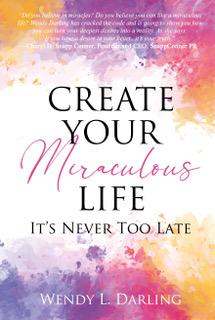Interviews
Navigating the Niche: A Comprehensive Guide to Finding Success on Amazon KDP

Navigating the Niche: A Comprehensive Guide to Finding Success on Amazon KDP
Choosing the right niche is crucial to success as a self-published author. While there are many factors that contribute to success in a niche, there are a few key factors that are particularly important to keep in mind.
Amazon KDP, niche, self-publishing, success, competition, demand, quality, marketing, innovation.
First and foremost, demand is critical. You can write the most high-quality book on a niche topic, but if there’s no demand for it, you’re unlikely to see much success. So, how can you determine if there’s demand for your niche? One way is to do keyword research using tools like Google Keyword Planner or Amazon’s own search bar. Look for phrases and keywords related to your niche and see how many people are searching for them. You can also look at sales data for similar books in your niche to get a sense of how well they’re selling.
Another important factor is competition. If there’s already a lot of competition in your chosen niche, it can be challenging to stand out and gain traction. That said, a little competition can be a good thing — it shows that there’s already an audience for your niche. The key is to find ways to differentiate yourself from your competitors. This could mean writing on a sub-niche within your larger niche or focusing on a specific angle or theme that’s not being covered by other authors.
Quality is another critical factor in niche success. No matter how much demand there is for your niche or how little competition there may be, if your content isn’t high quality, it’s unlikely to succeed. So, what does “quality” mean in this context? It means writing in a way that’s engaging, informative, and well-researched. It means ensuring that your book is professionally edited and formatted. And it means providing value to your readers — whether that’s through sharing your own experiences and insights or providing them with actionable tips and strategies.
Marketing is also crucial to success in a niche. Even if you’ve written the best book in the world, if no one knows about it, it’s unlikely to sell. So, how can you market your book effectively? There are a few different strategies you can try. First, consider building an author platform — this could be a website, a blog, or a social media presence where you can connect with readers and promote your work. You can also use paid advertising, like Amazon Ads or Facebook Ads, to reach a wider audience. Finally, don’t overlook the power of email marketing — building an email list of interested readers can be a great way to promote your work and stay connected with your audience.
Finally, innovation is an often-overlooked factor in niche success. It’s important to stay ahead of the curve and be willing to adapt to changing market conditions. This could mean trying out new marketing strategies or experimenting with different types of content. It could also mean expanding your niche to include related topics or branching out into new niches altogether.
So, what does all of this look like in practice? Let’s take a look at a few examples:
Example 1: A self-help author who wants to write a book on productivity. They do some keyword research and find that there’s a high demand for productivity-related content. However, they also see that there’s a lot of competition in this niche. To differentiate themselves, they decide to focus on productivity for busy moms — a sub-niche within the larger productivity niche. They write a book that’s well-researched, engaging, and full of actionable tips and strategies. To market their book, they build an author website and social media presence, run Amazon Ads, and offer a free productivity guide to readers who sign up for their email list.
Example 2: A fiction author who wants to write a book in the cozy mystery genre. They do some research and find that cozy mysteries are a popular niche on Amazon KDP. However, they also see that there’s a lot of competition in this niche. To stand out, they decide to focus on a specific theme within the cozy mystery genre — for example, a series of books set in a small town that’s obsessed with a particular hobby or pastime. They write books that are well-plotted, with engaging characters and lots of humor. To market their books, they create a Facebook group for fans of their series, run Amazon Ads targeting cozy mystery readers, and offer a free short story to readers who sign up for their email list.
Example 3: A non-fiction author who wants to write a book on a niche topic like beekeeping. They do some research and find that there’s a moderate demand for beekeeping-related content. However, there’s not a lot of competition in this niche, which means there’s an opportunity to establish themselves as an authority. They write a book that’s well-researched and full of practical advice for new beekeepers. To market their book, they create a YouTube channel where they share videos of their own beekeeping experiences and answer common questions from viewers. They also reach out to beekeeping associations and blogs to see if they can guest post or do interviews.
Ultimately, success in a niche requires a combination of all these factors — demand, competition, quality, marketing, and innovation. By carefully selecting a niche, doing your research, and putting in the effort to create high-quality content and promote it effectively, you can increase your chances of success on Amazon KDP. Remember to stay flexible and willing to adapt as you go, and don’t be afraid to try new things or pivot your approach if something isn’t working. With persistence and hard work, you can establish yourself as a successful self-published author in your chosen niche.
Interviews
podcasting microphone

Understanding Podcasting Microphones: An In-Depth Guide for Beginners and Professionals
Types of Podcasting Microphones
Dynamic Microphones
Dynamic microphones are the most popular choice for podcasting. They convert sound into electrical signals using a diaphragm, coil, and magnet. These microphones are robust, can handle high sound pressure levels, and require less gain than other types. This makes them excellent for capturing voices in less-than-ideal acoustic environments. The Shure SM7B and the Electro-Voice RE20 are industry standards among podcasters.
Condenser Microphones
Condenser microphones are sensitive and tend to capture a wider frequency range compared to dynamic microphones. They require phantom power to operate and are ideal for capturing subtle vocal nuances, making them great for voice work in studios. Notable condenser microphones include the Audio-Technica AT2020 and the Rode NT1-A, both widely admired for their clarity and depth.
Lavalier Microphones
Lavalier microphones, or lapel mics, are small, clip-on devices ideal for interviews and on-the-go recording. They ensure hands-free operations and are particularly useful for video podcasts. Wireless options add flexibility, allowing hosts to move freely during recordings. Popular choices include the Rode SmartLav+ and the Sennheiser ME 2-II.
USB Microphones
For those looking for simplicity and convenience, USB microphones are perfect. They connect directly to a computer without the need for additional equipment. While they may not deliver the same quality as XLR microphones, models like the Blue Yeti and the Audio-Technica ATR2100x-USB are excellent for beginners and home podcasters.
Important Features of Podcast Microphones
Frequency Response
Frequency response defines how a microphone reacts to different sound frequencies. Most voices fall within the 80Hz to 15kHz range, so a good podcasting microphone should adequately capture this spectrum. A flat frequency response is usually preferable, allowing for a more natural sound.
Polar Patterns
The polar pattern of a microphone determines its sensitivity in various directions. The most commonly used patterns are:
- Cardioid: Ideal for podcasting as it captures sound from the front while minimizing background noise.
- Omnidirectional: Captures sound from all directions, useful for roundtable discussions but picks up more ambient noise.
- Bidirectional: Captures sound from the front and rear, suitable for interviews between two people.
Sensitivity and Sound Pressure Level (SPL)
Sensitivity measures how effectively a microphone converts sound into an electrical signal. A higher sensitivity microphone captures softer sounds without requiring additional gain. Sound pressure level (SPL) measures how loud of a sound the microphone can handle without distortion. Choosing a mic with appropriate SPL ratings is crucial, especially in louder environments.
Essential Accessories for Podcasting Microphones
Pop Filters
Pop filters reduce plosive sounds (like “p” and “b” sounds) that can cause distortion. They are typically made of a screen or foam, which diffuses rapidly moving air before it hits the microphone diaphragm.
Microphone Stands and Boom Arms
Proper positioning is critical for optimal audio capture. Microphone stands and boom arms allow podcasters to adjust their microphone’s position easily while keeping hands free for notes or gestures.
Shock Mounts
Shock mounts prevent vibrations and handling noise from reaching the microphone, ensuring cleaner recordings. They are especially useful when recording in less controlled environments.
Audio Interfaces
For those using XLR microphones, an audio interface is necessary to convert the analog signal into digital for your computer. Popular models include the Focusrite Scarlett 2i2 and the PreSonus AudioBox USB, which provide excellent sound quality and ease of use.
Tips for Choosing the Right Microphone
Define Your Needs
Consider your podcasting style. Are you recording solo, interviews, or panel discussions? The type of conversations you have will dictate your microphone choice.
Budget Considerations
While it’s easy to get carried away with high-end equipment, plenty of budget-friendly microphones offer excellent quality. Determine a budget that allows for good quality without breaking the bank.
Test Before You Buy
Whenever possible, test microphones in-store to find the sound that best suits your voice. Listening to the audio capture can significantly influence your decision.
Read Reviews and Watch Tutorials
Before investing, check online reviews and tutorials. Many YouTube channels offer in-depth sound tests and comparisons to help you make informed choices.
Maintenance and Care for Podcasting Microphones
To extend the lifespan of your microphone, regular maintenance is vital. Here are some key maintenance tips:
- Keep it Clean: Dust and saliva can accumulate and affect sound quality. Use a soft cloth to wipe down your microphone regularly.
- Use Windscreens: For outdoor recording, use a windscreen to prevent wind interference and protect the mic from moisture.
- Store Properly: When not in use, store your microphone in a protective case to prevent physical damage.
Enhancing Your Podcasting Experience
Investing in a good microphone is just the beginning. To fully get the most out of your podcasting experience, include thorough planning, effective editing software, and quality recording space. An acoustically treated room, for example, can significantly reduce background noise and enhance vocal clarity.
Understanding the nuances of podcasting microphones will empower you to make informed decisions that improve your production quality. Armed with the right microphone and accessories, you can deliver a rich audio experience, engage your audience, and elevate your podcasting journey to new heights.
Interviews
Veteran actor Manoj Bajpayee speaks out against the growing influence of PR in Bollywood

From the BalleBalleRadio Entertainment Desk
Manoj Bajpayee, a celebrated actor known for his powerful performances, has recently voiced his concerns regarding the pervasive influence of PR machinery within Bollywood. Bajpayee argues that the industry’s increasing focus on public relations often overshadows genuine acting talent, leading to a skewed perception of success and merit.
Bajpayee’s comments come amidst ongoing debates about the phenomenon of ‘National Crush’ titles and the superficiality of fame. He suggests that such manufactured hype can be detrimental to the careers of trained actors who dedicate themselves to the craft, but may not possess the resources or inclination for extensive self-promotion.
He emphasized the importance of acting prowess over PR stunts, highlighting the potential humiliation faced by actors who have honed their skills through rigorous training, only to be sidelined by individuals prioritizing media visibility. Bajpayee’s own career, alongside that of fellow actor Piyush Mishra, serves as an example of sustained success built on consistent, quality performances rather than fleeting PR campaigns.
For more updates, follow us on https://facebook.com/balleballeradio. Like, Share, Comment!
-

 Editor's Choice3 months ago
Editor's Choice3 months agoRanveer Singh and Deepika Padukone Reunite for New Romantic Comedy
-

 Editor's Choice8 months ago
Editor's Choice8 months agoReview: Rekhachithram (2025) – A Masterful Blend of Mystery and Redemption
-

 Authors and Artists4 years ago
Authors and Artists4 years agoCreate Your Miraculous Life: It’s Never Too Late Wendy L. Darling
-

 People's Choice4 months ago
People's Choice4 months agoBollywood in August 2025: A Landscape of Sequels, Social Commentary, and Star Power







